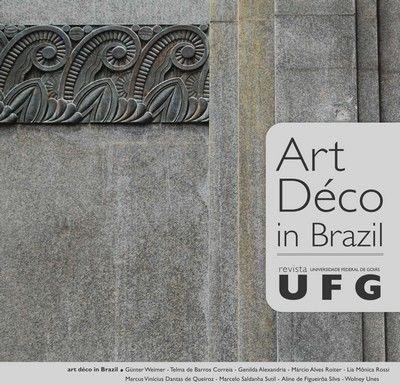The Marajoara influence in Brazilian Art Déco
Resumo
Marajó in the Brazilian Amazon, the world’s largest fluvio-marine island, had already undergone several phases of development before the arrival of the Portuguese colonizers. The Marajoara phase, considered the most significant, stretching from 400 to 1350, left behind an array of innumerable exquisitely decorated artifacts, such as funeral urns, benches, sculptures, vases, tangas and ornaments in stone, terracotta, ceramic and clay. Twentieth-century inventions, such as cars, airplanes and seaplanes, plus the adventurous spirit of many scientists, historians, journalists, businessmen, and even looters, made Marajó a very popular place to visit. Artifacts of the preCabral era were much sought after worldwide by museums, collectors and art dealers. Brazilian art tuned into this moment, and a group of creative individuals took advantage of this line of business. In fields as diverse as literature and music, architecture and the applied arts, the Nativists were born. (...)Downloads
Downloads
Publicado
Como Citar
Edição
Seção
Licença
A Revista UFG utiliza a licença Creative Commons CC-BY (4.0) - Atribuição 4.0 Internacional para periódicos de acesso aberto (Open Archives Initiative - OAI) como base para a transferência de direitos.
Os autores que publicam nesta revista concordam com os seguintes termos:
1) Os autores podem distribuir, remixar, adaptar e desenvolver sua obra, mesmo para fins comerciais, desde que dêem à UFG os devidos créditos pela criação original. Os autores podem copiar e redistribuir o material em qualquer meio ou formato.
2) Os autores são autorizados e incentivados a publicar e distribuir seu trabalho online (por exemplo, em repositórios institucionais ou em sua página pessoal) em qualquer momento antes ou durante o processo editorial, desde que seja feita referência ao local de origem da publicação, ou seja , endereço eletrônico/referência da Revista UFG.
3) Os autores dos trabalhos publicados na Revista UFG são expressamente responsáveis por seu conteúdo.
4) Todos os trabalhos submetidos à Revista UFG que possuam imagens, fotografias, figuras em seu corpo devem vir acompanhados de termo de cessão de direitos autorais do autor, do participante da imagem e, no caso de crianças, dos familiares das crianças expostas, com seus dados e assinatura.
Acesse o documento TERMO DE AUTORIZAÇÃO DE USO DE IMAGEM aqui.










